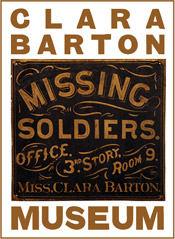One Family’s Story – How Clara Barton’s Work Brought Comfort
You can support scholarship like this!
What a pleasant surprise when I stumbled upon the Clara Barton Missing Soldiers Office Museum while walking in D.C. a few months ago. This special museum commemorates the tireless work of Clara Barton, “a friend of the soldier,” who gathered and documented information regarding soldiers who died in captivity. Our family ancestor and Union soldier, Jones Sherwood, died at Andersonville Prison during the Civil War. His wife, Frances Sherwood, benefitted from Clara Barton’s effort to bring closure to families who had received little or no information about their loved ones.
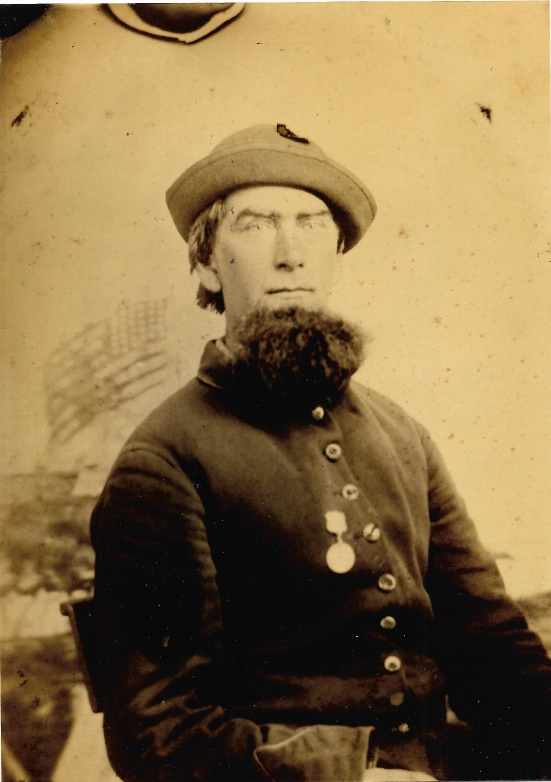
Jones Ebenezer Sherwood 1831-1864 Courtesy of the Author
Jones Ebenezer Sherwood, my grandfather’s grandfather, was drafted into the Union Army during the Civil War in July 1863 and served with the 76th New York Infantry. Our family has numerous original handwritten letters Jones wrote to family members before he was captured on May 5, 1864 at the Battle of the Wilderness in Virginia. After Jones was transported via rail car to the new prison in Andersonville, Georgia, the family did not hear directly from him again. However, Frances did receive letters from the wife of Captain Griggs Holbrook, Jones’ comrade and fellow prisoner at Andersonville.
In June 1864, the month after their husbands were captured by Confederate Soldiers, Mrs. M. J. Holbrook began a correspondence with Frances Sherwood that continued into 1865. A June 7, 1864 letter from Mrs. Holbrook provided Frances news of Jones’ capture. She wrote:
Madam,
I have just received a letter from my husband in which he wished me to write to you that your husband was safe and well…
They are prisoners and just waiting for the cars to take them further South. He also says they are treated well and thinks they may get exchanged soon. Borrow no trouble he writes.
Mrs. M. J. Holbrook
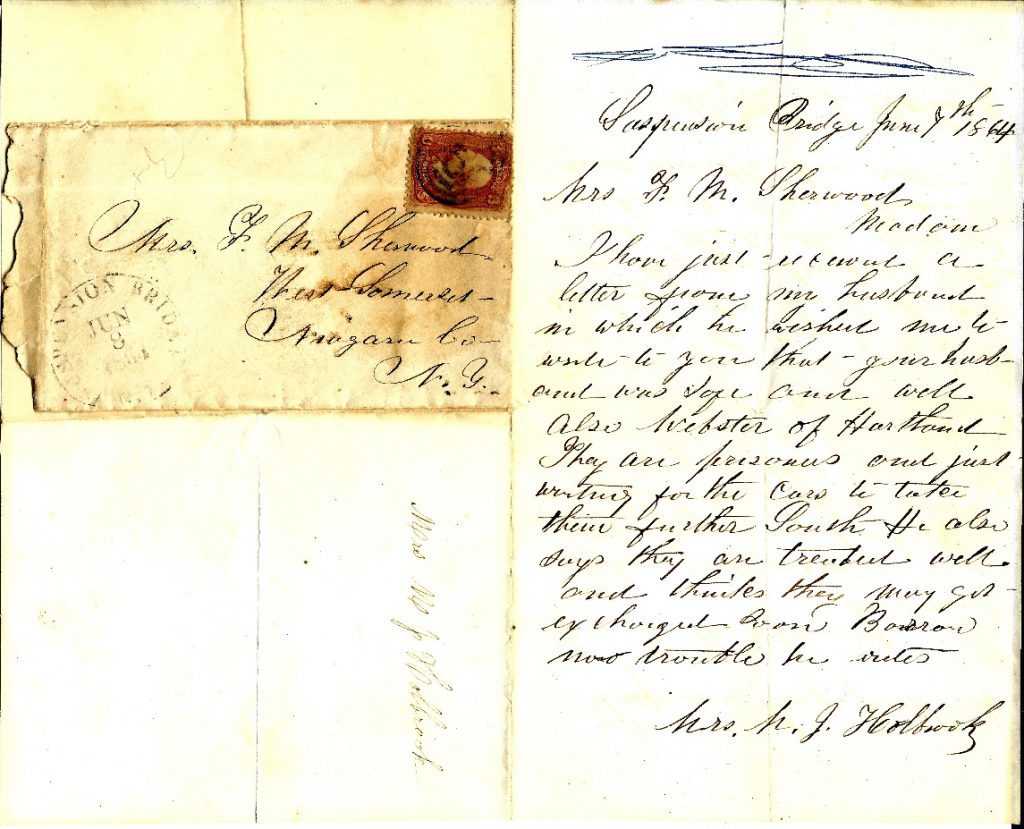
June 7 letter to Frances Sherwood Courtesy of the Author
Months of silence ensued as Frances waited for word regarding Jones. She received a letter dated October 31, 1864 from the Office of Exchange of Prisoners, responding to a letter she had written asking of Jones’ whereabouts months ago. The agent stated, “Your husband is now undoubtedly in some of the Georgia prisons. I am going to Savannah during the present week and if possible to find his whereabouts. I will affect his release and restore him to you.” That turned out to be wishful thinking.
Fast and reliable news was so hard to come by for families with relatives in POW camps. Frances hadn’t heard anything about her husband since June when, in December, Mrs. Holbrook wrote in a letter to Frances with the news of her own husband’s death and Jones’ likely death as well. She wrote:
Dear friend,
Last Tuesday night I received the news of my husbands death which took place the 22nd of Aug and I am fearful that I shall write the same sad news to you in regards to yours. My husband sent me his Diary by a man (name unknown) who took care of him in his last sickness. He writes in his Diary of taking care of a Jones Sherwood, speaks of his trials in trying to get medicine for him and also of his efforts in getting him in the hospital and finally succeeded after carrying him over several times. There again Aug 3rd he speaks of the death of a Jones Sherwood of Com G. I have sometimes thought it might not be your husband…If it should prove as I fear you can write to me and I will copy the journal from the time they were taken prisoners so you can know of the treatment and also his sickness. If this man should prove to be your husband you can be assured of one thing that he would have all the care that it was possible under the circumstances.
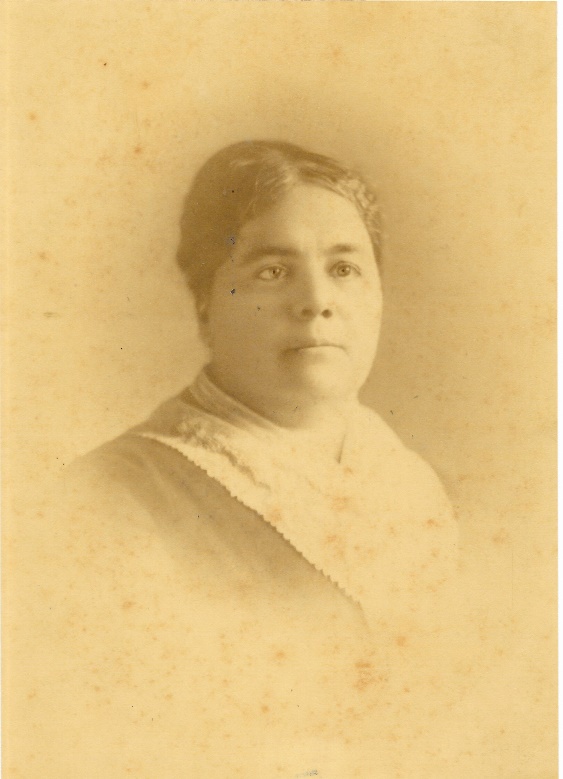
Frances Marion Hebbard Sherwood 1830-1887 Courtesy of the Author
The two women had a shared grief. Mrs. Holbrook wrote to Frances on January 10, 1865 with personal thoughts:
You wrote me “that you had three little ones.” I know it is hard for a woman to be left with children without a father – but I almost envy you. You have something to care for and something which will take your mind from your troubles, but I have not any yet. I have a good home and a large circle of good friends, for which I hope I feel greatful, but I have often felt that if I had a child I should be much happier- but God knows best.
Mrs. Holbrook fulfilled her promise to Frances and sent her a handwritten copy of a portion of Captain Holbrook’s diary, the part she believed would be of interest to Frances (from the time of their husbands’ capture in May to August 12th1864, ten days before Holbrook himself passed away). Holbrook’s short entries included descriptions of daily activities and living conditions at Andersonville. But important to Frances, the entries also included information about her husband:
Saturday, July 2nd: Jones quite sick- have to keep his head wet all the time, is very feverish. Drawed a small ration of beef. Am living mostly on beef soup.
Tuesday, July 6th: Had a damp night- caught a cold. Jones still continues very sick. Sold Jones rations for 25 cents- bought rice for him. Jones worse tonight. Heard that Richmond was taken with 40,000 prisoners.
Friday, July 15th: After carrying Jones over to the hospital several times- finally succeeded in getting him in. Have a hard time to get our meals cooked for want of wood. Amask got the scurvy in his gums.
Wednesday, August 3rd: They took out a number of sick. They attend to no one unless sick enough to go to the hospital. Jones Sherwood of Com G died last night.
The first time Frances heard of her husband’s death was likely from Mrs. Holbrook, four months after his passing at Andersonville. In April 1865, Frances received an official letter from the Superintendent’s Office of the NYS Military Agencies in Albany notifying her of Jones’ death. The official letter held no firm details other than confirming Jones’ death. It stated that, “we are unable to inform you at what time he died or what was his disease. It was during the months of July, or August, 1864.”
It wasn’t until Frances heard from Clara Barton’s Office of Correspondence with the Friends of the Missing Men of the Army on March 5, 1866 that she was able to know anything aside from the fact her husband was dead. Barton’s letter provided more details regarding the cause of death and, critically, his final resting place:
“J.E. Sherwood Co ‘G’ 76 N.Y. died August 4, 1864 of diarrhea chronic at Andersonville GA, the no of his grave is 4676.” (Note the unexplained discrepancy regarding Jones’ death date between Barton’s letter and the journal entry)
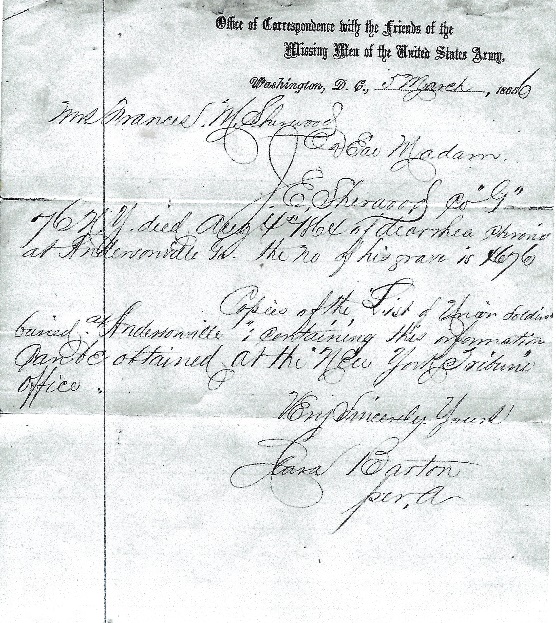
Clara Barton’s letter to Frances Sherwood Courtesy of the Author
Thanks to the efforts of Clara Barton and Dorence Atwater’s expedition to Andersonville in July and August of 1865 which established the Andersonville National Cemetery, and the record of A List of Union Soldiers Buried at Andersonville, the Sherwood family received confirmation of Jones’ date of death and cause of death and the location of his grave. Those few details might seem sparse to us today, but at the time when confirmed news was so hard to come by, those bits of information were as good as gold to families waiting for official word of what became of their relatives. Although the letter from Clara Barton’s office came a year and a half after Jones’ death, it demonstrated her persistent commitment to provide as much information as possible to loved ones and share in the very painful and human cost of the War for thousands of families just like ours.
Want to learn more? Follow us on Facebook and Twitter to discover more stories from Civil War medicine!
Become a museum member and support our educational programs and research like this.
About the Author
Diane Palmer recently moved to Washington, D.C. from Western New York, where she worked as an academic advisor and instructor of American History at Genesee Community College. She earned her Master of Arts degree in History from the State University of New York College at Brockport. Diane served on the Board of Trustees of the Cobblestone Museum in Albion, New York for 7 years prior to relocating to D.C.
Tags: Andersonville, Clara Barton, Dorence Atwater, Holbrook, Jonathan Letterman, Jones Sherwood, Missing Soldiers Office Posted in: Uncategorized